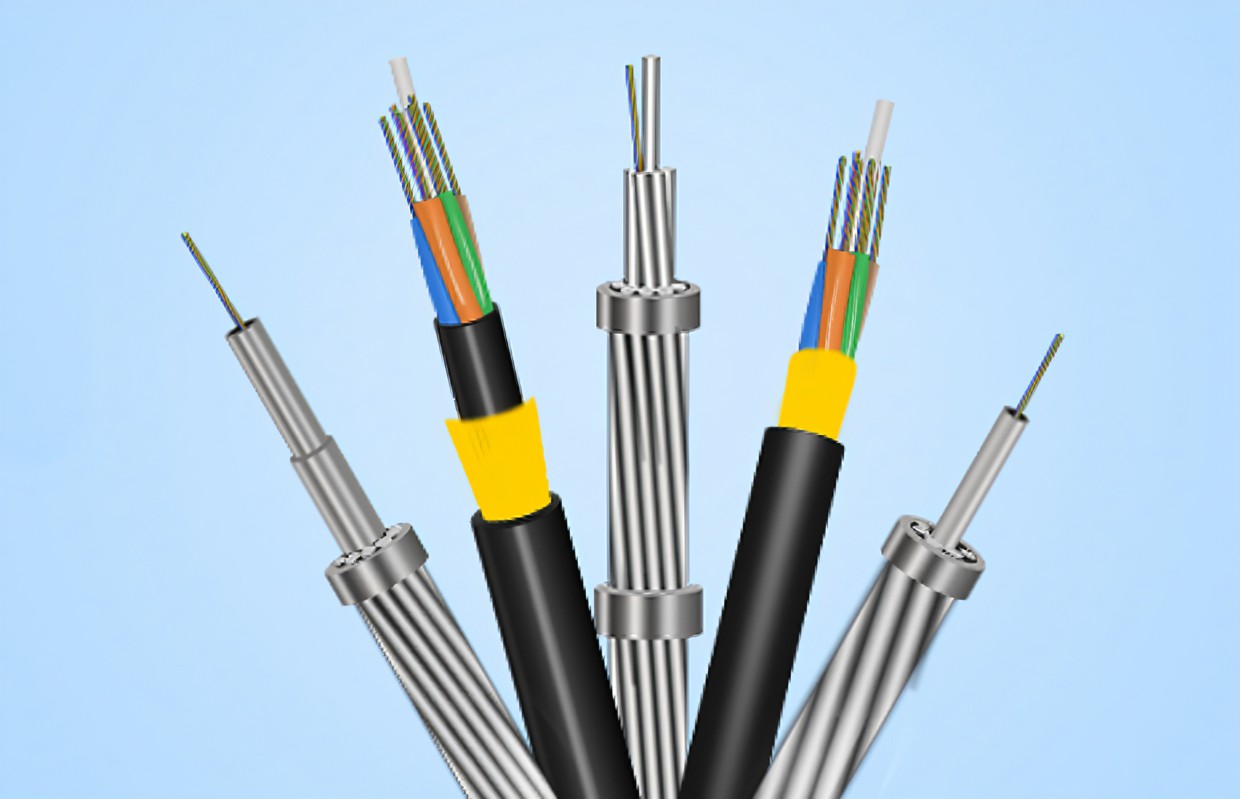
ADSS fiber optic cables and OPGW fiber optic cables are now frequently used for power utilities and telecommunications.
In this article, some of the differences between ADSS and OPGW fiber optic cables will be discussed.
All-dielectric self-supporting (ADSS) fiber optic cables are strong enough to support themselves between structures without the use of conductive metal elements.
It is designed for aerial transmission and distribution line environments.
As the name implies, the cable has no metal parts and requires no support or suspension wires, so it can be installed in a single run.
OPGW fiber optic cable, also known as fiber optic composite aerial ground cable, is a fiber optic cable with a dual function.
It performs the task of grounding as well as providing a path for transmitting voice, video, or data signals.
Fiber optic cables are designed to be installed on power transmission and distribution lines.
The optical fiber is protected from environmental conditions such as lightning, short circuits, and loads to ensure reliable signal transmission.
ADSS or OPGW can sometimes be tricky when dealing with outdoor fiber optic cabling due to differences in cabling design, characteristics, environment, cost, and application. Let's take a look at the main differences between them.
ADSS fiber optic cable structure mainly consists of center reinforcement, stranded loose tube, water-blocking material, aramid yarn, and sheath. ADSS fiber optic cable structure is divided into single sheaths and double sheaths two kinds.
OPGW fiber optic cable structure is mainly composed of stainless steel tubes of fiber optic unit and aluminum-clad stainless steel tubes.
Among them, the metal monofilament aluminum clad steel, aluminum alloy peripheral reinforcement composed of.OPGW fiber optic cable has 4 types: ACS (aluminum-clad stainless steel tube), stranded tube, center tube, and ACP (aluminum-clad PBT).
ADSS fiber optic cable can be installed without turning off the power, has a large span, good tensile properties, is lightweight, and small diameter.
OPGW fiber optic cable provides a stainless steel fiber optic unit, laminated stranded structure, aluminum alloy wire, and aluminum clad steel wire armored, coated with anticorrosive grease between the layers, high load carrying capacity, and large span.
Installation Position
The two installation location is not the same - if the wire aging need to be rewired or replaced, compared to the ADSS fiber optic cable is better as far as the installation location is concerned, ADSS fiber optic cable is more suitable for installation in the distribution and transmission environment where the firewire is placed.
OPGW fiber optic cables are more expensive to install and require a large one-time investment, while ADSS fiber optic cables are relatively inexpensive to install because they do not require the replacement of power transmission lines and can be freely switched.
APPLICATIONS
OPGW fiber optic cable is used in the electric power industry, power transmission and distribution lines (i.e. 500KV, 220KV, 110KV voltage level lines), voice, video, data transmission, SCADA network, and dark fiber optic lease.
ADSS fiber optic cable is used for telecommunication, distribution, and high-voltage transmission lines, conductors, outdoor antenna self-supporting installation, enterprise OSP network, broadband, FTTX network, railroads, long-distance communication, CATV, closed-circuit television, computer network system, Ethernet LAN, outside the plant and campus backbone network of electric power companies, telecommunication companies, and private network groups.
SUMMARIZE
ADSS cable is cheaper and easier to install than OPGW cable. However, OPGW cables have higher voltage transmission efficiency and can also be used for telecommunication to transmit data for the purpose of high-speed data transmission.
1 Based on the high modulus of elasticity, lightweight, negative expansion coefficient, and bullet-proof capability of aramid yarn, ADSS fiber optic cable adopts aramid yarn as the tensile element.
2 Small geometric dimensions, the cable weight is only one-third of the ordinary fiber optic cable, can be directly added to the appropriate location of the power tower, and the additional load on the tower is extremely small.
3 The outer sheath is treated with neutral ionization impregnation, so it has strong resistance to electric corrosion.
4 Because of the use of non-metallic materials, the insulation performance is good, can avoid lightning strikes, even if the power line failure, does not affect the normal operation of the fiber optic cable.
5 No blackout construction, and the power line with the pole erection, no need to pull a separate line, the cost of the project is low.
Clarify the power line maintenance department has ADSS cable operation and management responsibilities, which should be regularly combined with the power line inspection fiber optic cable line inspection, found abnormal to identify the causes and timely processing.
At present, fiber optic line maintenance and management of artificial monitoring, fiber optic line automatic monitoring, and cable automatic monitoring are of three kinds.
Among them, manual monitoring applies OTDR regular test or uses SDH equipment to do continuous monitoring to determine the fault point, the method is currently used in the power system.
Fiber optic line automatic monitoring can timely check out the broken cable event and accurately find out the location of the break point, the technology is more mature and has been widely used in the market.
Automatic monitoring of fiber optic cables is most suitable for the maintenance and application of power system fiber optic cables, but because it does not solve the problem of overhead fiber optic cable sheathing, the application is currently difficult to realize, and it is the future direction of development.
The above is about the acceptance of ADSS cable but also introduces you to the difference between ADSS cable and OPGW cable, I hope to help you in the purchase of cables.